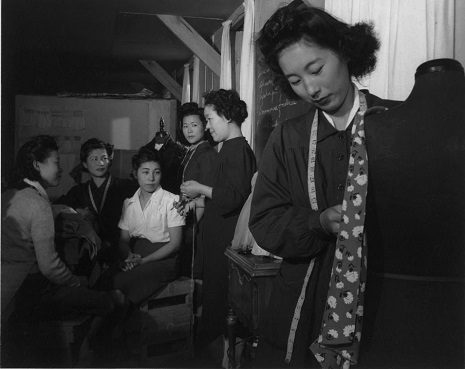
Ryie Yoshizawa, center, teaching a class on dressmaking
The relocation and internment of 120,000 Japanese Americans during World War 2 is one of the more baffling atrocities committed by the U.S. government. Not only was it relatively recent, two thirds of the detainees were U.S. citizens, and this was all done on U.S. soil. In addition to the sheer Big Brother terror of such a massive abuse of human rights, internment wasn’t even dealt out consistently. The government did not, for example, feel the same impulse to throw actual American Nazis into a camp—maybe because they already had camps of their own? Or maybe it’s because Germans are generally white, and governments are historically more sympathetic to the populations that most physically resemble their ruling class? (Nahhhh…)
At any rate, some beautiful and strange records of detainment exist, including Ansel Adams’ beatific photographs of Manzanar War Relocation Center in California. Adams openly sympathized with the Japanese, including many of the photos in his ironically titled book, Born Free and Equal.The book had limited circulation, likely due to reactionary, racist wartime sentiment, but Adams held fast on his principles, saying:
The purpose of my work was to show how these people, suffering under a great injustice, and loss of property, businesses and professions, had overcome the sense of defeat and dispair [sic] by building for themselves a vital community in an arid (but magnificent) environment.
You’ll notice Manzanar had a lot of resources—the volunteers who helped build the camp were actually the first interned. At its most populous, it had 10,046 inhabitants, and it was a bustling, organized community—of sorts. Although Adams’ work focuses on how people at Manzanar seemed to thrive, the conditions were awful. Families were cramped into tiny “apartments” divided from larger buildings—the partitions between “rooms” didn’t reach the ceiling, so privacy was unthinkable. The latrine was coed, with no partitions between toilets or shower stalls. The rickety buildings did very little to protect detainees from scorching summers, freezing nights and winters, and the dry, violent winds that coated them in desert dust while they slept.
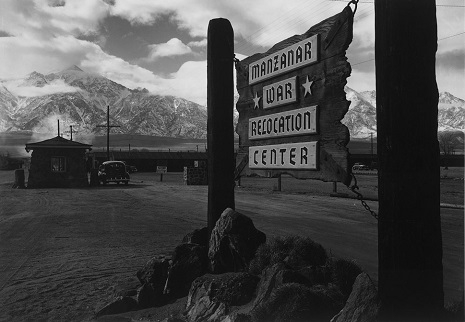
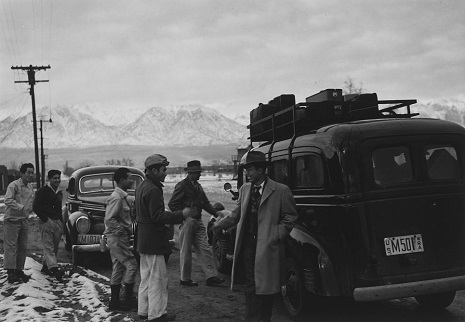
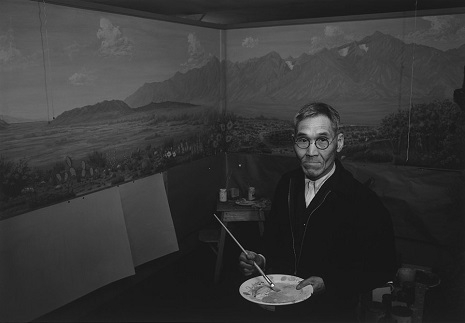
Painter C.T. Hibino.
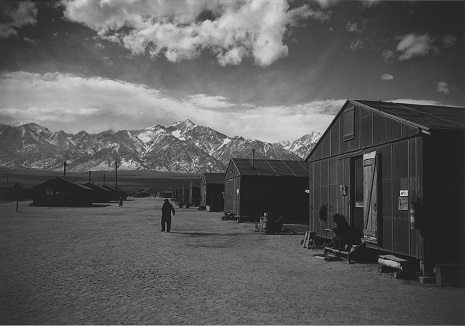

Many of the detained were actually decorated members of the military, like Corporal Jimmy Shohara.
More after the jump…





